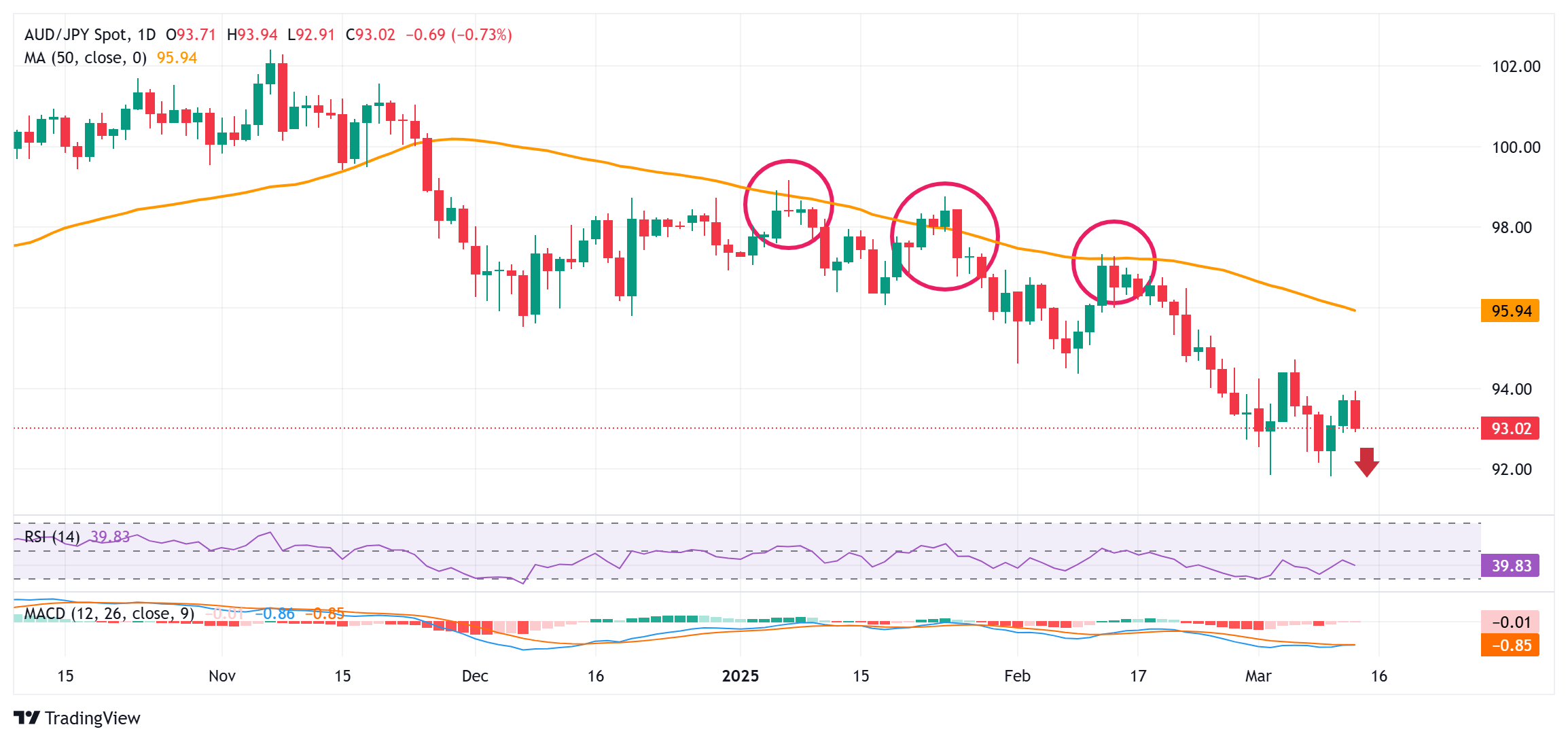- AUD/JPY fails to sustain its two-day recovery from a multi-month low.
- BoJ rate hike expectations and escalating trade tensions boost the safe-haven JPY, pressuring the pair.
- The ongoing US-China trade conflict reinforces the bearish outlook, signaling potential further declines.
The AUD/JPY pair faces renewed selling pressure near the 94.00 mark, its weekly high reached earlier on Thursday, and continues its steady decline through the European session. Spot prices have dropped below 93.00, pausing a two-day recovery from the lowest level since August 2024, recorded on Tuesday.
Market sentiment remains cautious as expectations of another Bank of Japan (BoJ) rate hike, coupled with concerns over U.S. President Donald Trump's aggressive tariff policies, drive demand for the safe-haven Japanese Yen (JPY). Additionally, the risk of escalating trade tensions between the U.S. and China—the world's two largest economies—weakens the Australian Dollar (AUD), further pressuring the AUD/JPY pair.
From a technical perspective, repeated failures near the 50-day Simple Moving Average (SMA) and bearish indicators on the daily chart suggest a downward bias. Continued weakness could see the pair testing the 93.50 intermediate support, followed by the 92.00 level and the 91.80 multi-month low, particularly amid speculation that the Reserve Bank of Australia (RBA) may implement further rate cuts.
On the upside, any meaningful recovery would first encounter resistance around 93.70, followed by the 94.00 weekly top. A decisive break above this level could pave the way for further gains toward the 94.70-94.75 monthly peak, the 95.00 psychological mark, and the 96.00 resistance near the 50-day SMA.
A sustained move beyond the 96.00 level could shift the short-term bias in favor of buyers, signaling a potential bottom for the pair. This could open the door for a rally toward the 96.65 intermediate resistance, followed by the 97.00 round figure, the 97.75-97.80 range, and ultimately, the 98.00 level.
AUD/JPY daily chart






